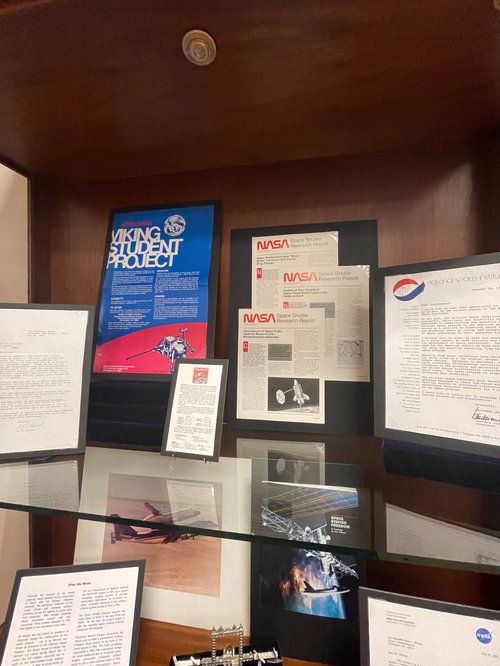Exhibits
Photo of Wernher Von Braun, 1960
Following the success of the Apollo program, NASA planned human exploration of Mars with the Voyager missions. However, the perceived reduction of the Soviet threat and changing political priorities forced the agency to scale back their ambitions. With Voyager canceled, NASA proceeded instead with two unmanned Viking probes launched in 1975 that landed on the red planet a year later.
On display are two letters to members of Congress urging the continuation of the space program – one is by Wernher von Braun as president of the National Space Institute. Von Braun helped to design the German V-2 rocket during World War II before the U.S. military relocated him to work on the intermediate-range ballistic missile program. In 1960, he joined NASA as director of the Marshall Space Flight Center and chief designer of the Saturn V rockets that launched the Apollo spacecrafts (check out the names of fellow board members on the National Space Institute letterhead!).
The U.S. Department of Defense initiated the NAVSTAR project in 1973 as a global navigation satellite system to provide geolocation information to receivers on earth. Originally restricted to the military, civilians gained access to GPS in 1996.
The Space Shuttle program became the major focus of NASA in the late 1970s and 1980s. By the time the project ended in 2011, the reusable space orbiting vehicles completed 135 missions.
President Ronald Reagan announced the NASA project to build a permanently crewed orbiting Freedom Space Station at his State of the Union speech in 1984. The model on display represents a 1985-1986 conceptual design for a space station never produced due to high costs. Budget constraints eventually caused NASA to join a multi-national effort in 1993 that became the International Space Station.

